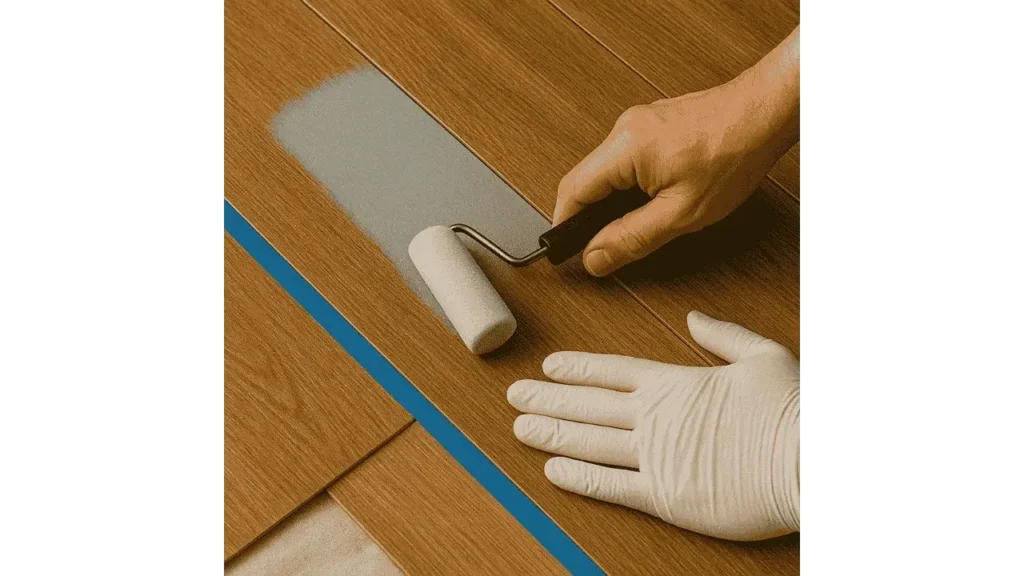As a flooring specialist with years of hands-on experience working with vinyl materials, I’ve come across this question more often than you’d expect: can you paint vinyl floors? The short answer is yes, but doing so rarely delivers long-lasting results. Vinyl is engineered with a wear layer designed to resist moisture, stains, and even paint. While a fresh coat might seem like a creative fix, it doesn’t always stick, literally or figuratively. In this post, I’ll break down what makes vinyl flooring so resistant to paint, the problems that can arise, and smarter alternatives for giving your floor a new look.

What is Vinyl Flooring?
Vinyl flooring is a synthetic material made from polyvinyl chloride (PVC) that’s engineered to resist water, stains, and wear. It’s available in plank, tile, or sheet formats, often mimicking the look of hardwood or stone. Its appeal lies in low maintenance needs, affordability, and durability, making it a strong choice for kitchens, bathrooms, and high-traffic areas.
Benefits of Vinyl Flooring
One of vinyl’s biggest advantages is its moisture resistance, which allows it to thrive in damp environments. It’s also easy to clean and holds up well under daily foot traffic. With hundreds of color and pattern options, homeowners can easily match their design preferences without the cost of natural materials. Its layered structure includes a protective wear layer, which plays a key role in resisting scuffs and preventing liquid absorption.
Read More: How to Glue Down Your Vinyl Plank Flooring?
How to Protect Vinyl Flooring?
To maintain the appearance and longevity of vinyl floors, homeowners should use furniture pads and area rugs to guard against dents and scratches. Routine cleaning with non-abrasive solutions prevents grime from embedding in the surface. Experts also recommend avoiding prolonged exposure to direct sunlight and excessive heat, which can lead to warping or fading over time.
Why Painting Vinyl Floors Isn’t Ideal?
Vinyl Is Designed to Repel Paint
The same wear layer that resists stains and water also repels paint, even when primers are used. This makes it hard for paint to stick properly. According to flooring technician Laura Mills,
“Most vinyl flooring has a top coat that won’t let anything bond easily, especially paint. That’s intentional for its durability, but frustrating for DIY painting projects.”
No Option for Refinishing
Unlike wood, vinyl can’t be sanded down or refinished. If the surface is damaged or worn, paint will only mask the problem temporarily. Over time, foot traffic leads to peeling, cracking, and visible wear, making the painted finish short-lived.
Hidden Dirt Can Ruin the Finish
Even with a deep clean, tiny particles and residues can remain trapped, which the paint then seals in. This leads to bubbling, uneven layers, or poor adhesion. Paint also doesn’t flex with vinyl’s natural movement, leading to faster deterioration.
Better Alternatives to Painting
Instead of painting, consider using peel-and-stick vinyl overlays to cover old flooring. These are designed to adhere well and can transform a space without major prep. For small imperfections, strategic use of area rugs is a quick aesthetic fix. If the floor is in bad shape, replacing individual planks is often more cost-effective and longer-lasting.
Final Takeaways
Technically, yes, you can paint vinyl floors. But thanks to their protective wear layers and slick surfaces, painted vinyl usually doesn’t hold up well. The effort and cost often outweigh the benefits, and long-term results can be disappointing. For a cleaner, more durable solution, stick to vinyl-friendly overlays, repairs, or replacements. As *flooring specialist *Jeremy Kent puts it,
“Vinyl isn’t made for paint, it’s made to last. Trying to force it to be something else usually ends in frustration.”
